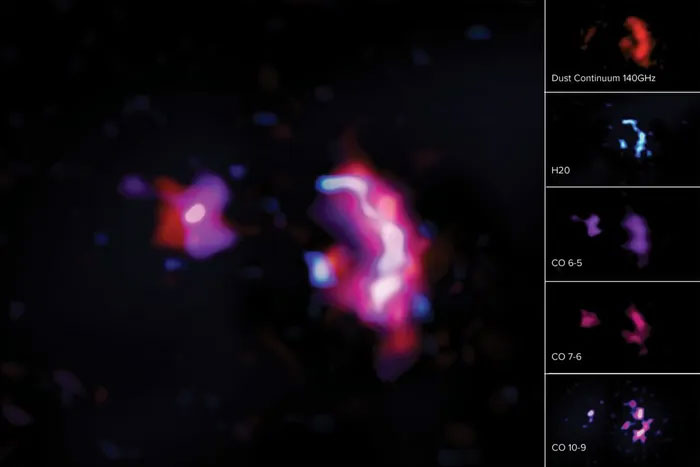The components of the galaxy known as SPT0311-58 were discovered by scientists from the University of Illinois using the ALMA Telescope in Chile. This galaxy was first identified at the same observatory in 2017.
Sreevani Jarugula, an astronomer at the University of Illinois and the lead researcher, stated that CO2 was also detected in this massive galaxy. With the presence of oxygen and carbon, elements that scientist Jarugula describes as “essential for life,” this galaxy has shown that molecular life could have formed not long after the Big Bang—the massive explosion that scientists believe led to the rapid expansion of the universe we observe today.

CO2 was also detected in this massive galaxy.
“This galaxy contains more dust and gas compared to other galaxies in the early universe. This presents us with many potential opportunities to observe various molecules and understand how the building blocks of life influence the development of the early universe,” remarked researcher Jarugula in a statement.
The discovery of water also indicates that this galaxy has stars that end their life cycles in a short time. Hydrogen was formed during the Big Bang, but oxygen comes from dying stars.
NASA noted that most stars typically “live” for billions of years, but the findings suggest that the stars in SPT0311-58 have undergone life cycles of less than 1 billion years. According to researcher Jarugula, these findings illustrate how water can exist in a distant place compared to Earth, while also raising questions about the stars and galaxies that formed very early in the universe.
Early-forming galaxies are producing stars at a rate thousands of times faster than that of the Milky Way. Studying the gas and dust of these galaxies provides us with information about their properties, such as how many stars are being formed, the rate at which gas turns into stars, and how galaxies interact with each other…
Joe Pesce, an astrophysicist and director at the National Science Foundation, commented that the results are “very intriguing” and could help us understand how the universe has evolved to this point.


















































